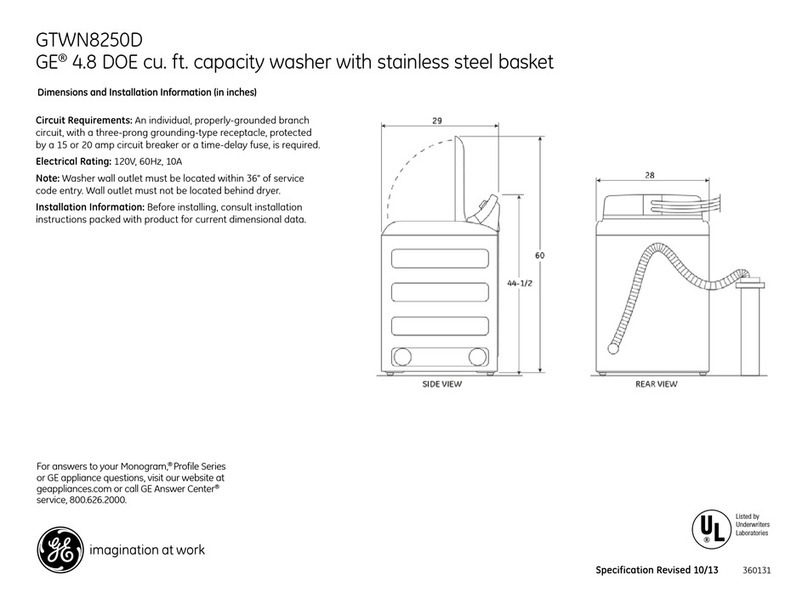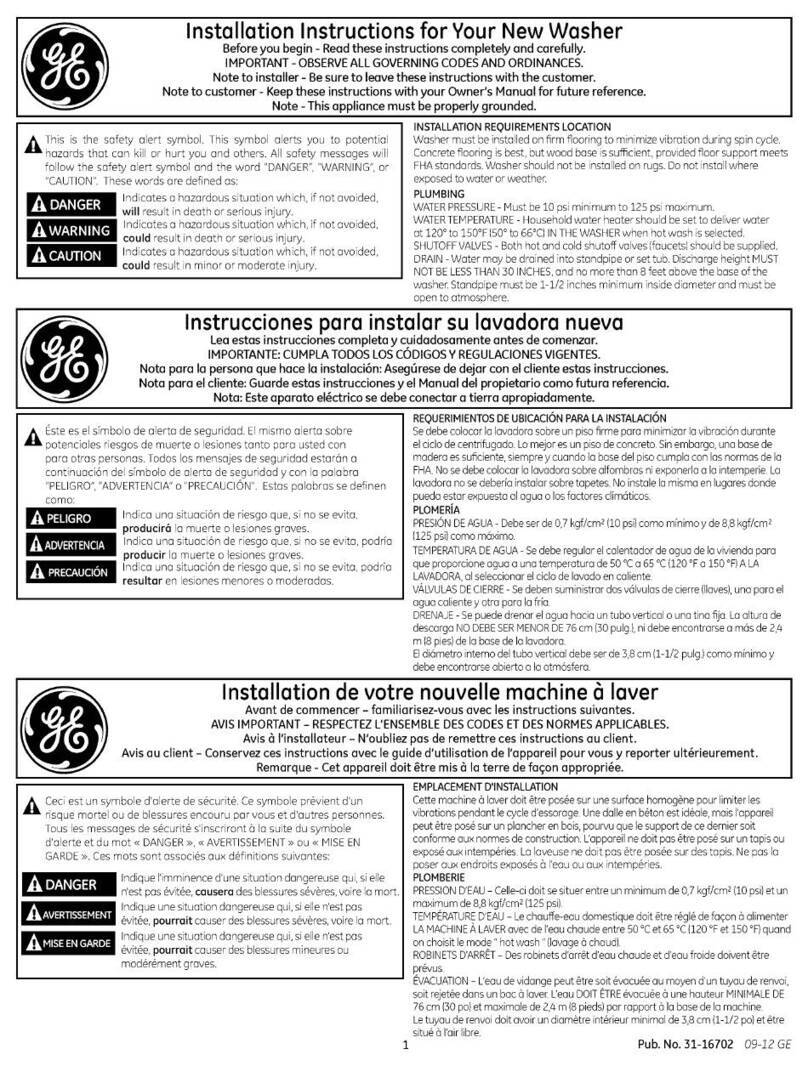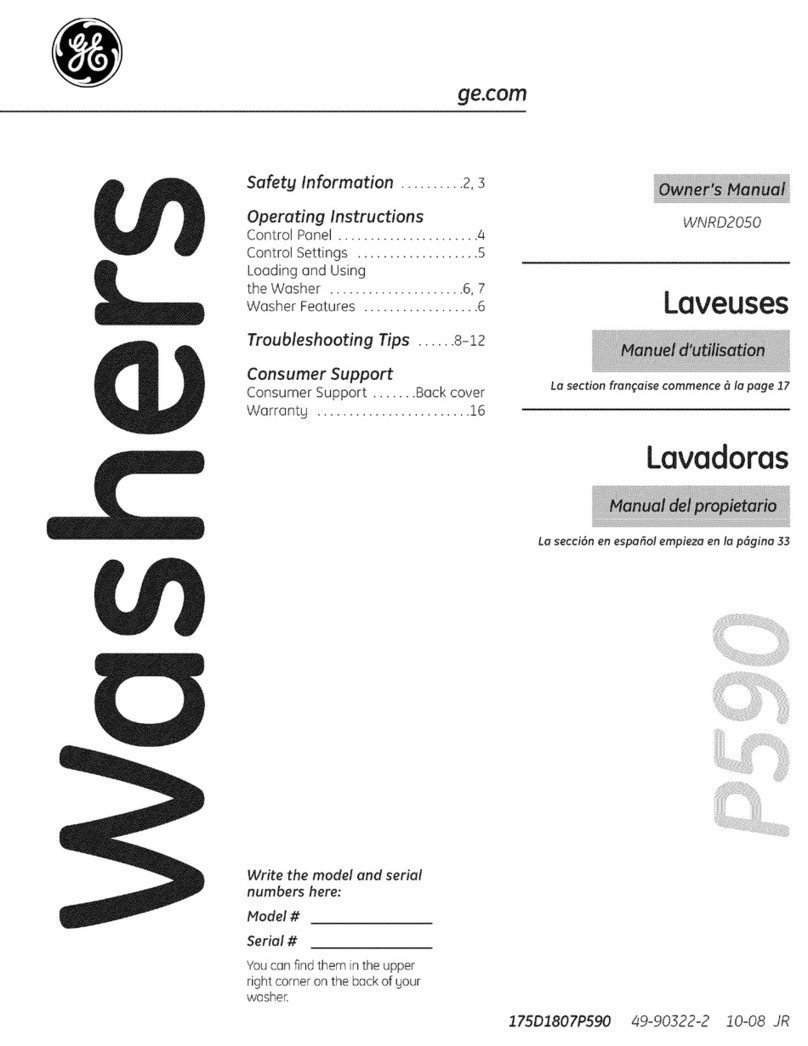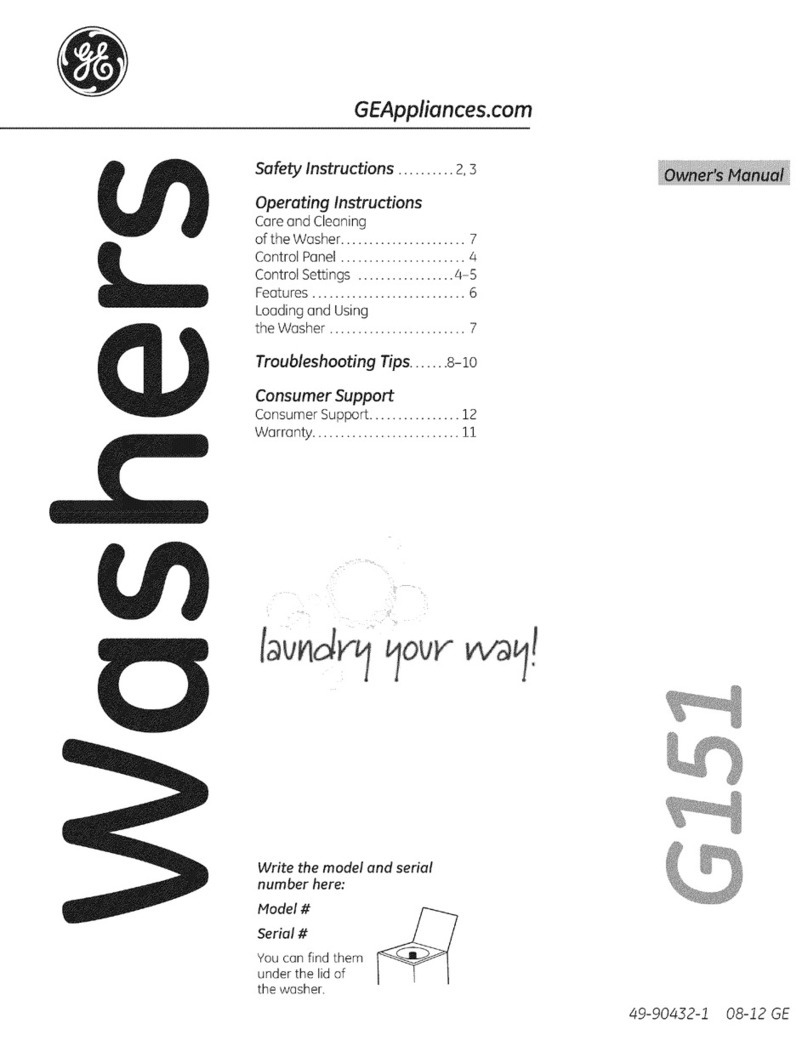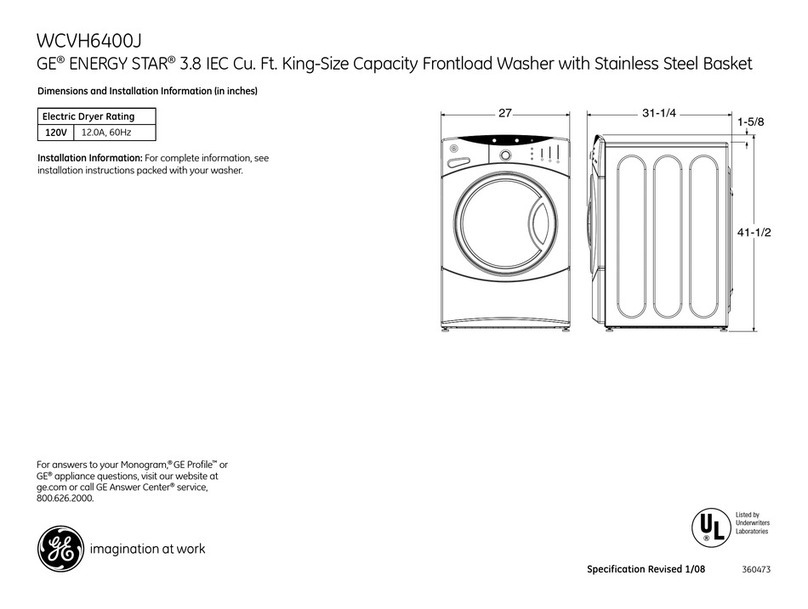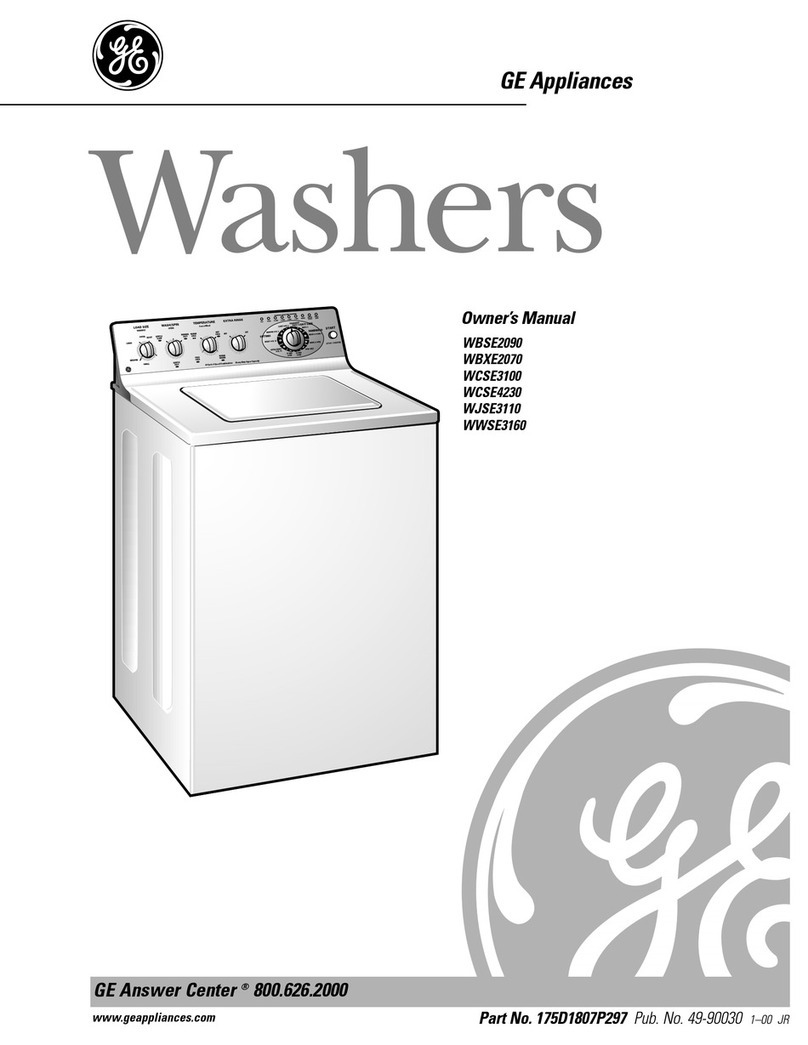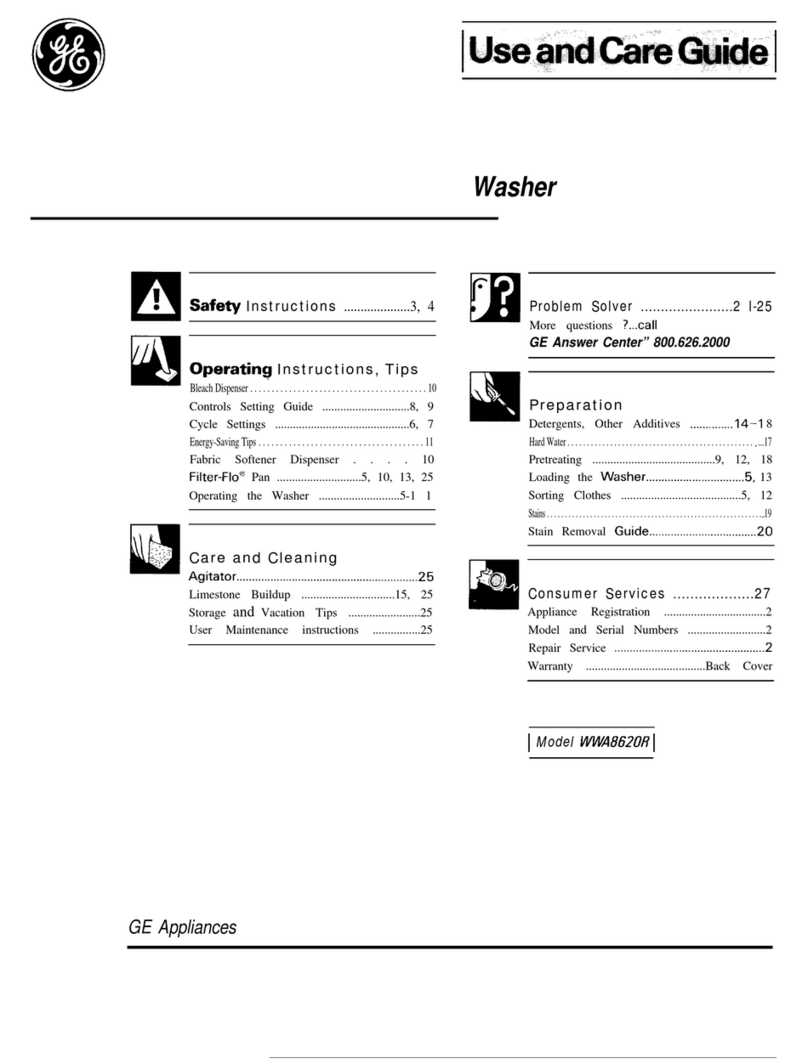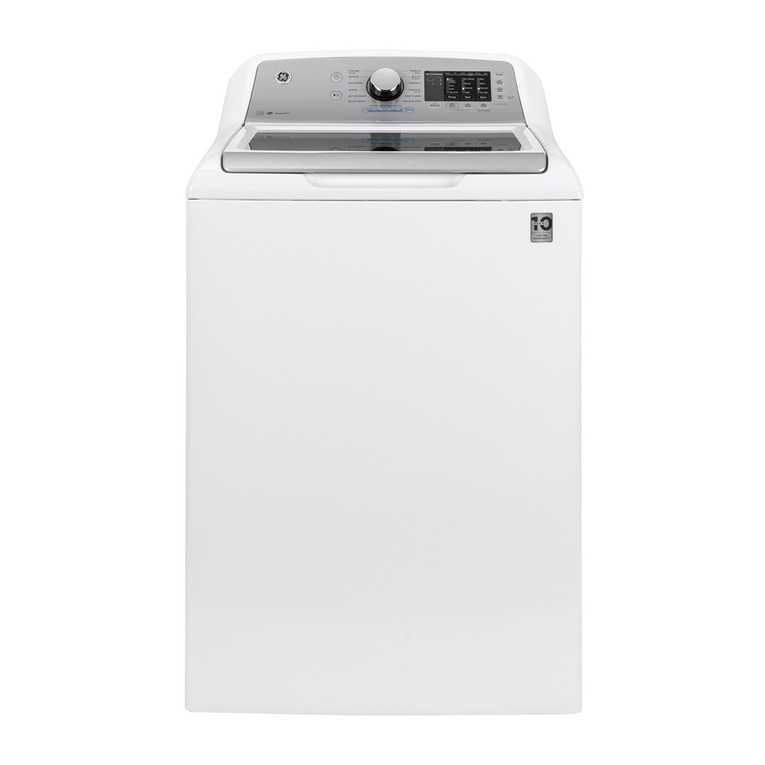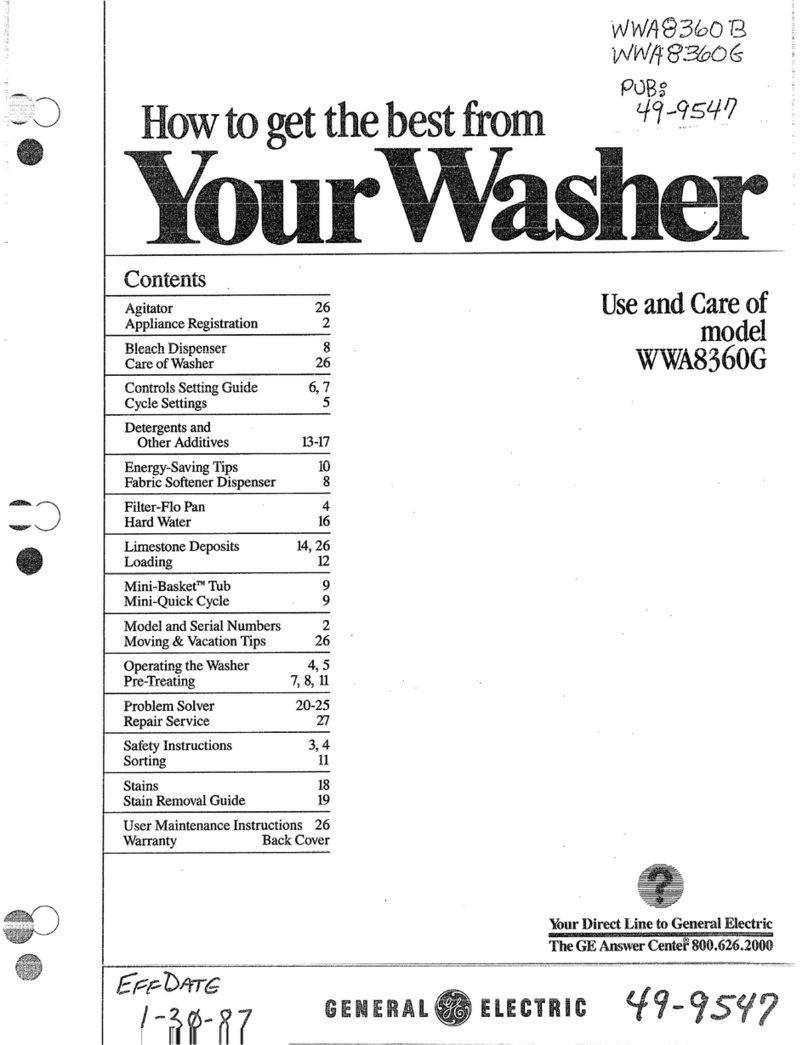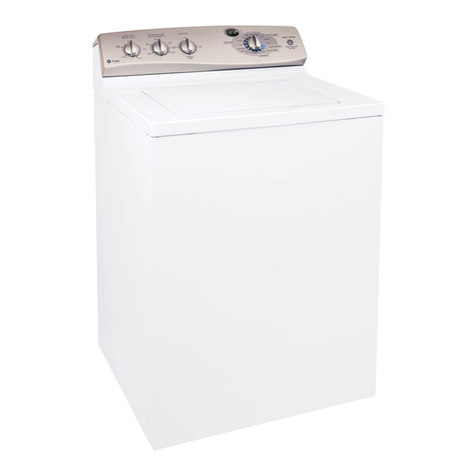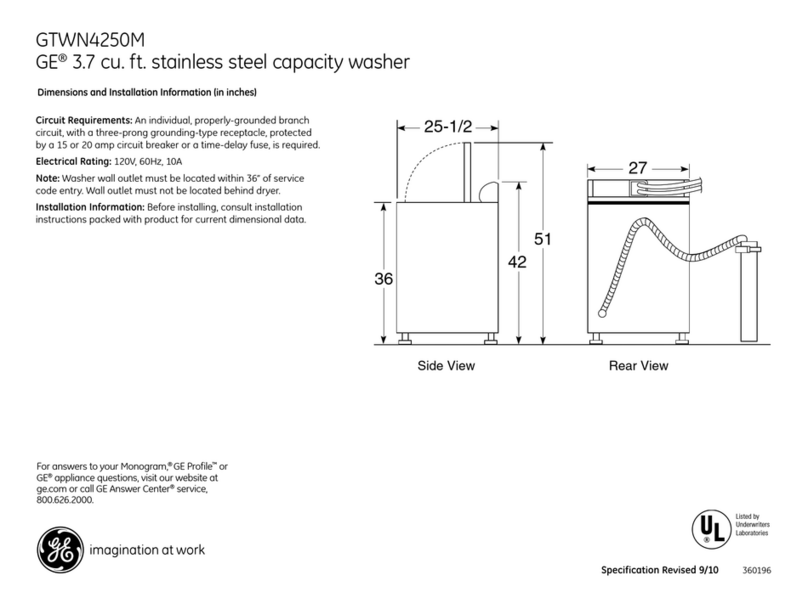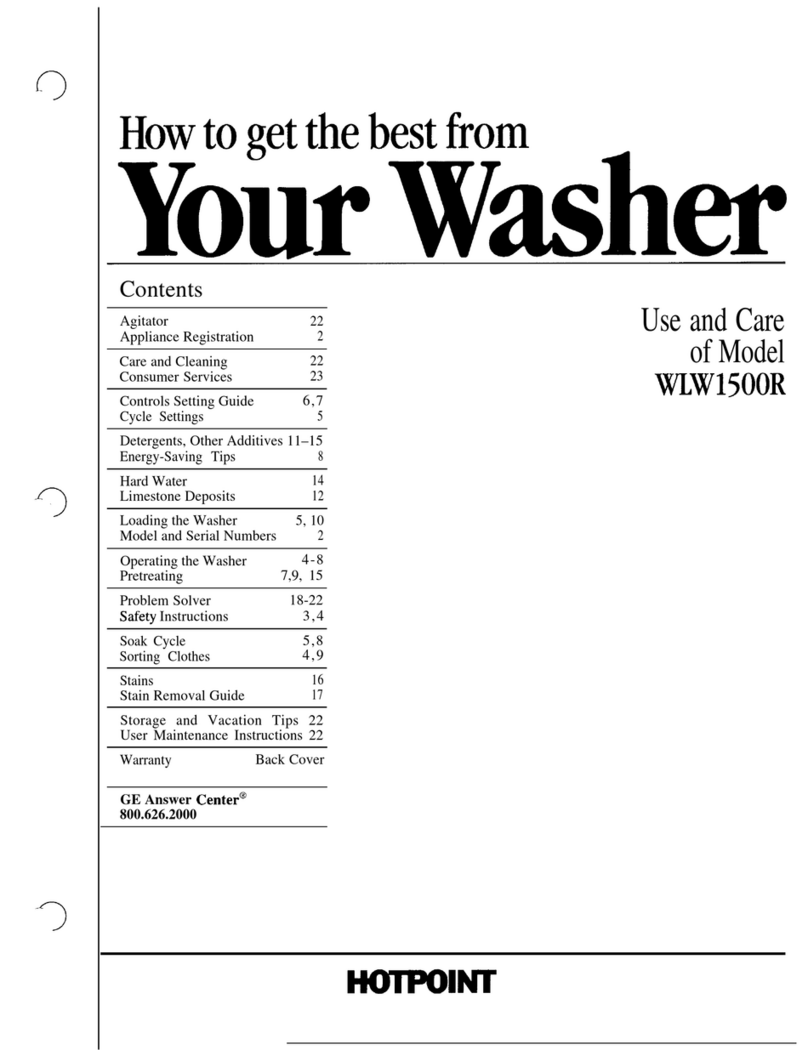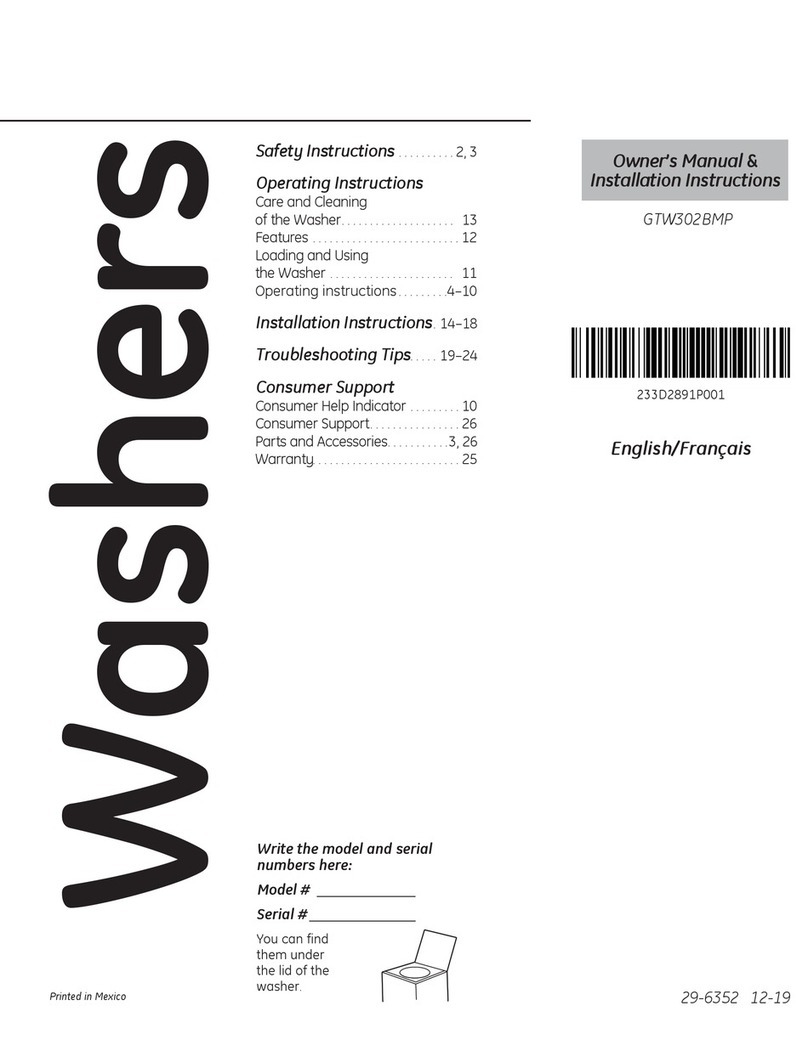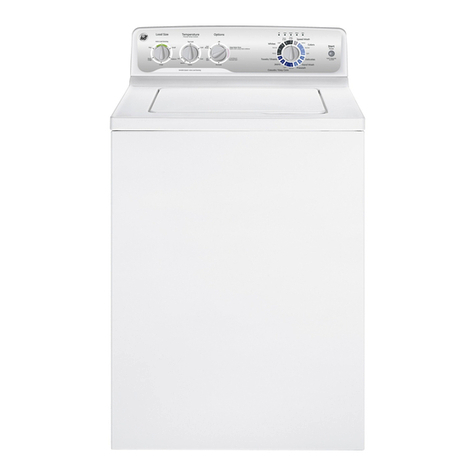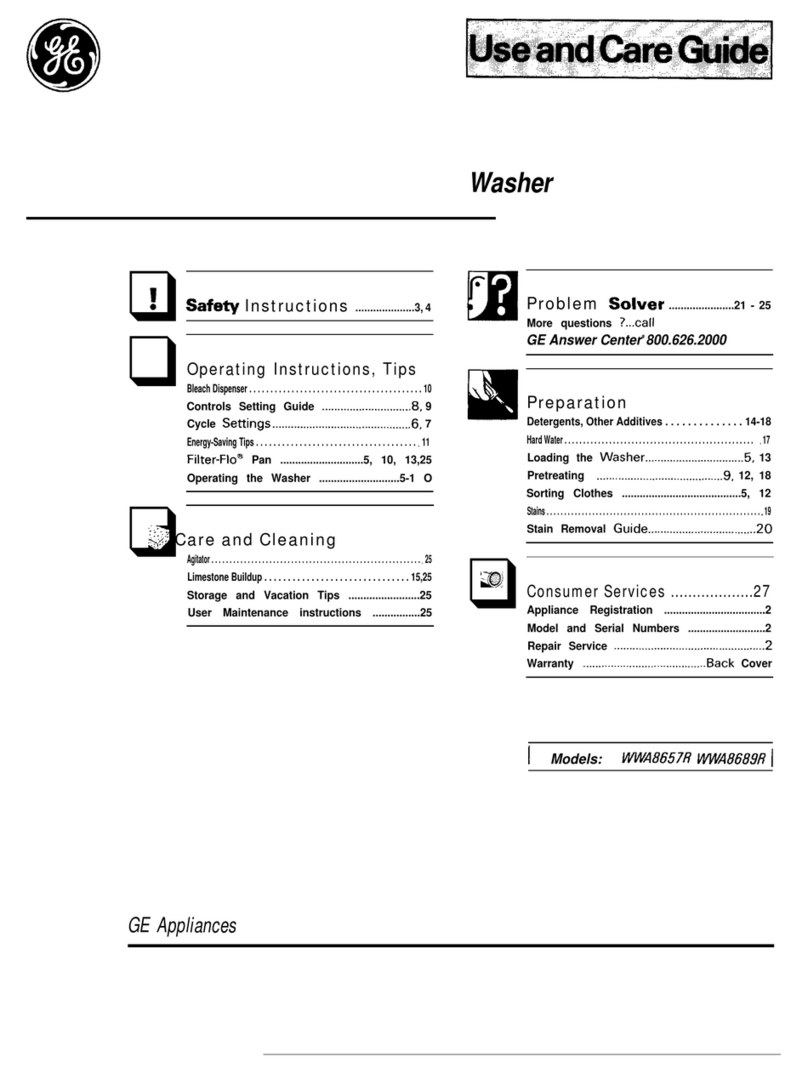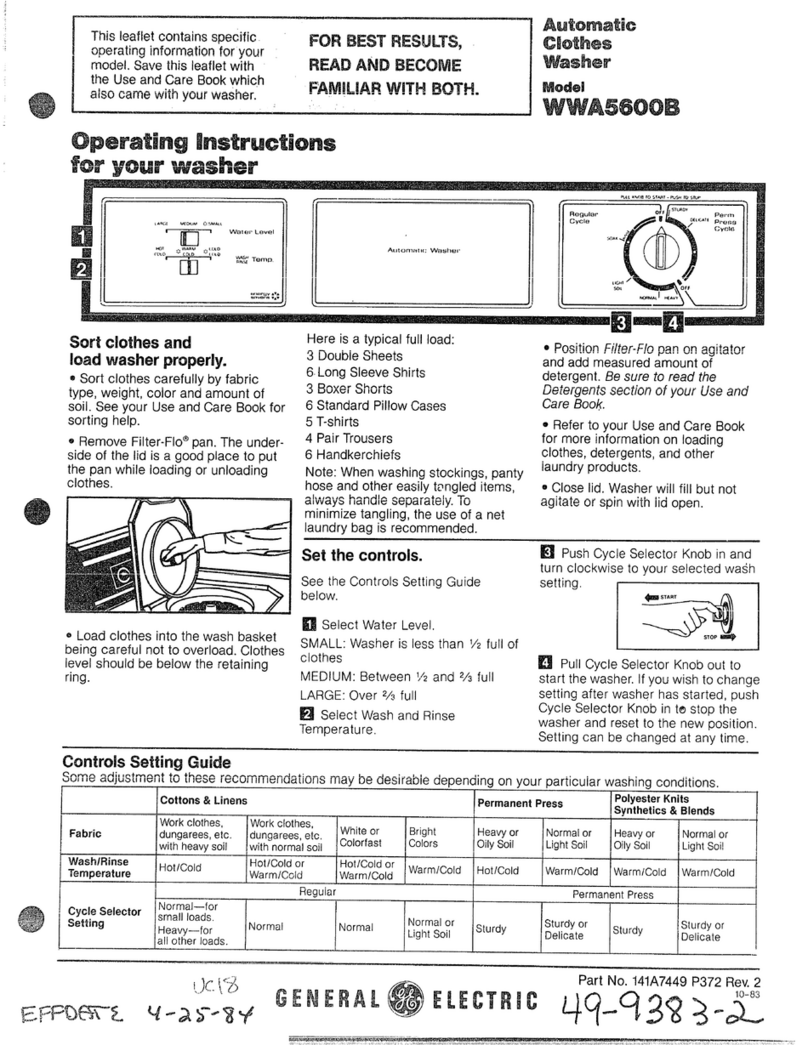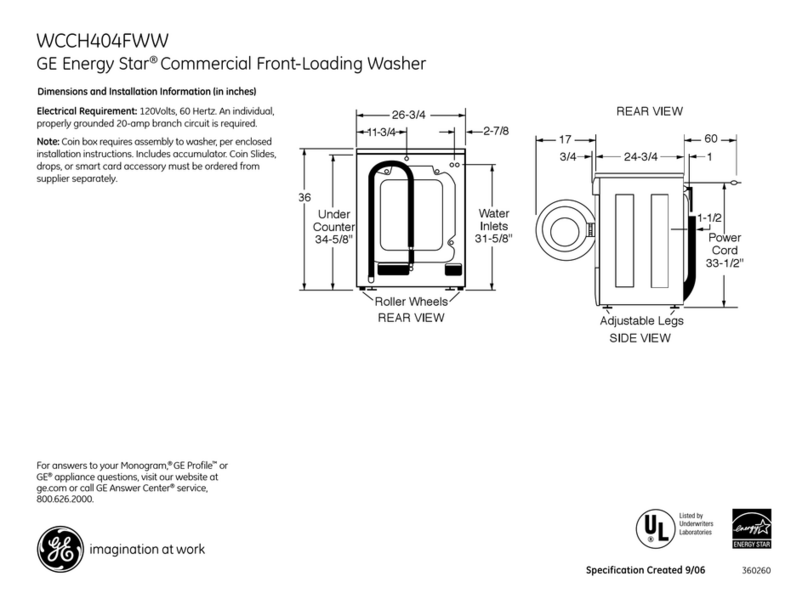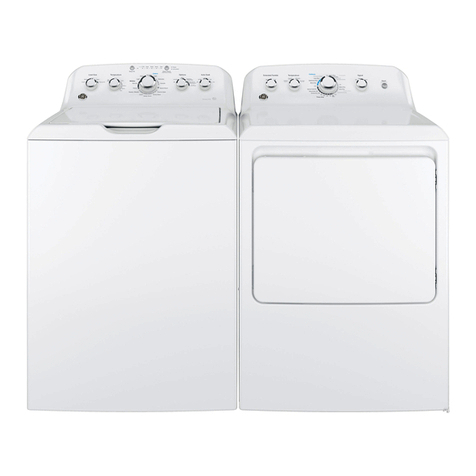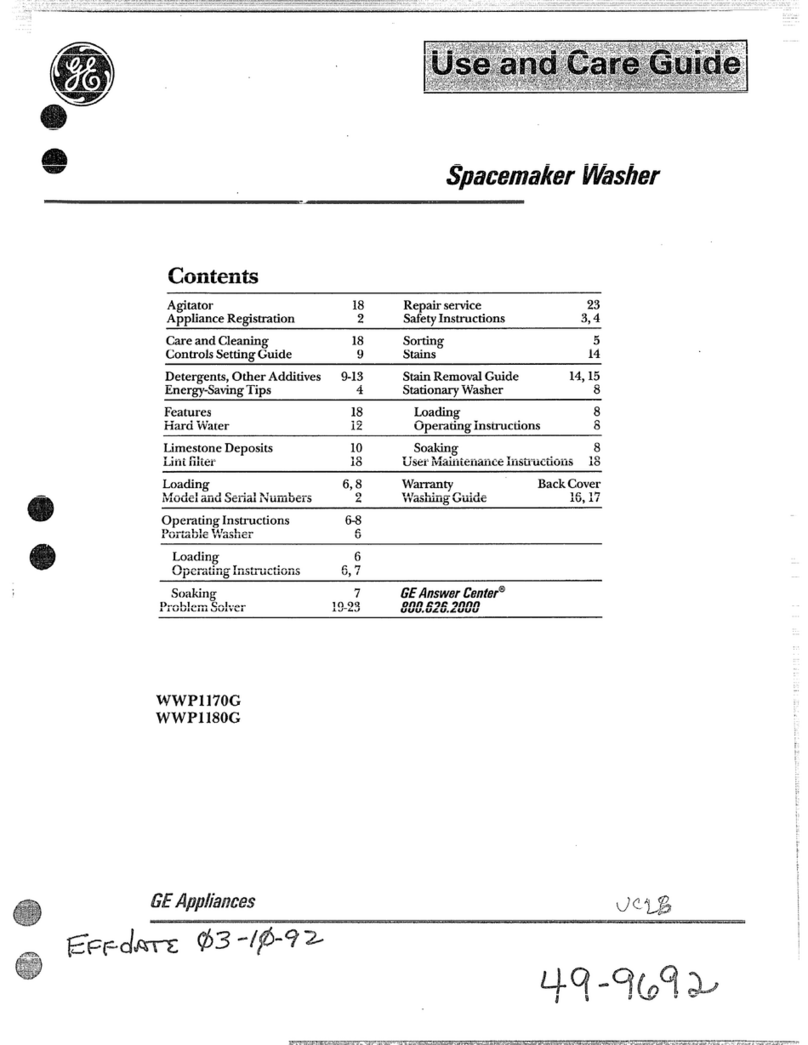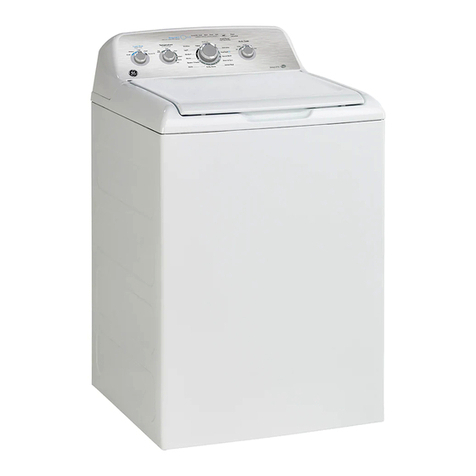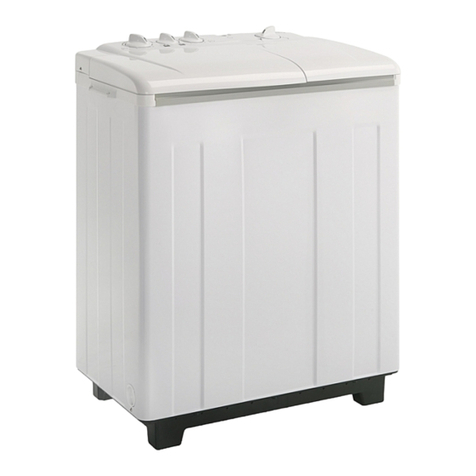
7
GEAppliances.com
Loading and using the washer.
Always follow fabric manufacturer’s care label when laundering.
Sorting Wash Loads
Sort by color (whites, lights, colors), soil level,
fabric type (sturdy cottons, easy care, delicates) and whether the fabric produces lint (terry cloth,
chenille) or collects lint (velveteen, corduroy).
Proper Use of Detergent
Add detergent and fabric softener before adding items
so that the detergent can work effectively. Using too
little or too much detergent is a common cause of
laundry problems.
Use less detergent if you have soft water, a smaller load
or a lightly soiled load.
For spots, apply pre-treatment to items as recommended
on the product label. Application should be made in
the basket to prevent overspray which may cause the
coloring on the lid or graphics to fade.
GE recommends the use of High Efficiency
detergents in all Energy Star rated washers.
HE detergents are formulated to work with low water
wash and rinse systems. HE detergents reduce
the oversudsing problems commonly associated
with regular detergents.
When using high efficiency or concentrated detergents,
consult the product label to determine amount required
for optimum performance. Excessive detergent will
negatively impact wash performance.
Loading the Washer
Load dry items loosely in the washer basket. For best
results, load items evenly and loosely around the
outside of the basket. To add items after washer has
started, lift the lid and submerge additional items
around the outside of the basket.
Do not place large items such as sheets, blankets
and towels across the Infusor™. Load them around
the outside of the basket.
Do not wash fabrics containing flammable materials
(waxes, cleaning fluids, etc.).
Washer will not agitate or spin with the lid up,
however the timer will continue to run.
Care and cleaning of the washer.
:DVK%DVNHW Leave the lid open after washing to allow
moisture to evaporate. If you want to clean the basket,
use a clean, soft cloth dampened with liquid detergent;
then rinse. (Do not use harsh or gritty cleaners.)
Use the %DVNHW&OHDQ cycle:
Using the washing machine in a humid space for a long
period of time may lead to a buildup of black mold and
germs in the air inside the washer basket and affect your
health. If you clean the washer tub regularly on a monthly
basis using %DVNHW&OHDQ it will keep the washer basket
clean for hygienic use.
1Add tub cleaner or lime scale remover into the
detergent dispenser drawer.
Do not exceed the maximum detergent limit line
when you add it. Detergent may remain in the
washer tub after cleaning.
When you use liquid chlorine bleach, load it into the
liquid chlorine bleach compartment.
When you use a powdered cleaner, pull out the
liquid detergent cup and add it into the main wash
detergent compartment.
When you use cleaning tablets, place them directly
into the washer tub. (Do not add tablet cleaner to the
drawer.)
2Press the Power button.
3Turn the selector knob to %DVNHW&OHDQ.
4Press the Start button.
NOTES:
Never load laundry while using %DVNHW&OHDQ. The laundry
may become damaged or become contaminated. Make
sure to clean the washer basket when it is empty.
It is recommended to leave the lid open after finishing the
laundry to keep the tub clean.
It is recommended that %DVNHW&OHDQ should be repeated
monthly.
If mildew or musty smell already exists, run %DVNHW&OHDQ
for 3 consecutive weeks.
Glass Lid (on some models): Use a clean, soft cloth
dampened with a vinegar and water solution.
Fill Hoses: GE recommends changing the hoses every
5 years.
Exterior: Immediately wipe off any spills. Wipe with damp
cloth. Try not to hit surface with sharp objects.
Interior: The occasional use of a cycle that contains
bleach will keep the inside of the washer clean.
Moving and Storage: Ask the service technician to remove
water from drain pump and hoses. See the Installation
Instructions packed with product for information on how
to reinstall the shipping rod to keep the tub stationary
when moving the washer. For more information, visit
GEAppliances.com or call 800.GE.CARES (800.432.2737).
Do not store the washer where it will be exposed to weather.
Long Vacations: Be sure water supply is shut off at
faucets. Drain all water from hoses if weather will be
below freezing.
